Explore the best places
Results for castelo in Portugal
Castelo de Monforte
- heritage
Povoação de Águas Frias
5400-601, Águas Frias
This castle, also known as Castle of San Antonio, located 825 m altitude and belongs, together with the Castle and St. Stephen, the defense of the Valley of keys. Was sent by Dom Dinis built in the 13th century, probably about traces of a Roman castro. In this walled enclosure that surrounded the village, there are still some traces. Of the four original towers remains only a donjon. Are also some remains of the ancient Citadel, where he opens a large lounge homeless, surrounded by granite walls.

Castelo de Montalegre
- heritage
Terreiro do Açougue, 5
5470-250, Montalegre
Montalegre Castle represents an important point of border defense and ensured, along with the castles of Piconha and Keys, the defenses of the valleys of the Cávado and Tâmega. In 1273, the year of the first Charter granted the Montalegre by Dom Afonso III, the Castle did not yet exist, but in 1281, at least a part of it already stood in Montalegre, according a letter from d. Dinis d. Isabel. In the letter the King offered twelve castles, among which that of Montalegre. In 1289-1331, during the reign of d. Afonso IV, the castle is rebuilt. In the 19th …
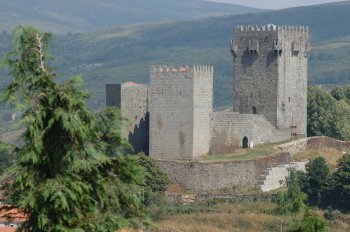
Castelo de Moura
- heritage
Calçada do Castelo
7860-009, Moura
Located on a limestone elevation, this castle has a keep dating from the time of Dom Dinis, which stands out for its volume. It was after the reconquest from the Moors that King Dinis had the castle completely remodeled, which had housed the Moors for 400 years. Later, King João I ordered the fortress to be expanded, but the War of Succession and the 1755 earthquake contributed to its state of ruin. On the southeast side there is an elbow-shaped entrance portal and a vaulted tunnel. Next to the castle there are ruins of the Convent of the Dominican Nuns …

Castelo de Mourão
- heritage
Rua Frei António das Chagas
7240-252, Mourão
The walls and towers remain from the 17th century fortifications to this day. The consistent medieval wall is made of marble and granite and is torn by several doors. It has a triangular plan with square towers. Inside the walls, the Casa da Guarda and the old Town Hall stand out. The military complex retains, despite being quite damaged, a unique and picturesque appearance.
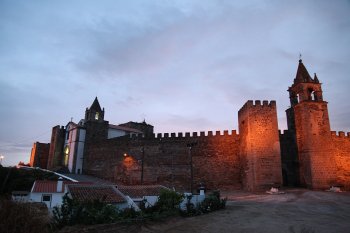
Castelo de Mértola
- heritage
Largo da Igreja
7750-338, Mértola
A castle of Romanesque and Gothic architecture, with quadrangular towers. The keep stands on the steepest slope. Of the medieval gates, only the Misericórdia Gate, overlooking the Guadiana River, remains. The old citadel, as well as important sections of the wall that enclosed the town, remain. Archaeological work in the castle's citadel has uncovered a Moorish quarter from the 12th and 13th centuries and several Roman structures from the 4th century. The Arab ceramics found are on display in the Mértola museum.

Castelo de Noudar
- heritage
EM1023
7230, Barrancos
After serious problems caused by Castilian rule, King Dinis handed Noudar over to the Order of Aviz, forcing them to build a strong castle and granting the town numerous privileges. Thus, the castle was built in 1308 by order of King Frei Afonso, master of the Order of Aviz, and underwent numerous repairs over the centuries. It consists of a hexagonal wall and enclosure, reinforced by regularly spaced cubes, with two gates defended by barbicans and two wicket gates. Recently, several archaeological investigations have been conducted to integrate and recover the origins of this fortification.
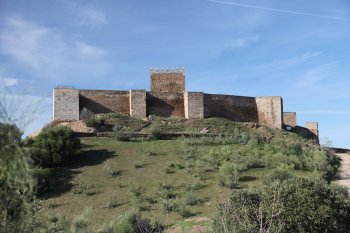
Castelo de Numão
- heritage
Rua Direita
5155-617, Numão
This castle possessed one of the best defensive border walls. Currently, only a few gates, sections of the wall, and towers crowning the hilltop remain. Several anthropomorphic tombs are also preserved near the east gate. Its layout had an irregular configuration, almost without battlements, and with three gates (the West Gate, the Arch Gate, and St. Peter's Gate), a keep, and four more towers.
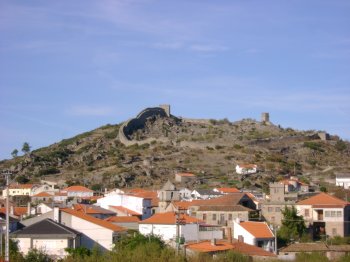
Castelo de Oleiros
- heritage
Oleiros
5200, Mogadouro
Fortified village, where only the walls and, inside, remains of dwellings.
Castelo de Ouguela
- heritage
EM373
7370-200, Ouguela
The castle was rebuilt by King Dinis in 1310 and underwent restoration work in the 18th century. Of the old fortification, situated atop a hill, only some sections of the wall and towers remain, in addition to the 17th-century fortifications, with escarpments, parapets, and ravelins, built during the Restoration War. The Church of Our Lady of Grace stands out, with its gable façade, framed straight lintel portal, and oculus. This castle is a characteristic example of the border fortresses of lowland regions, with a bastioned system determined by pyrotechnic artillery.
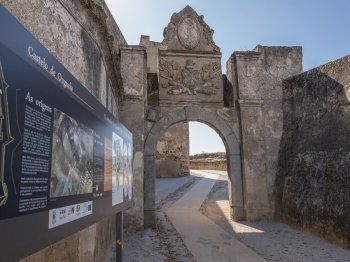
Castelo de Ourique
- heritage
Rua Dom Manuel, 19
7670-282, Ourique
Built by King Dinis, there are currently traces and remains of the old castle, around two meters high. Being an important historical testimony, you can see the strong citadel and a walled enclosure.
